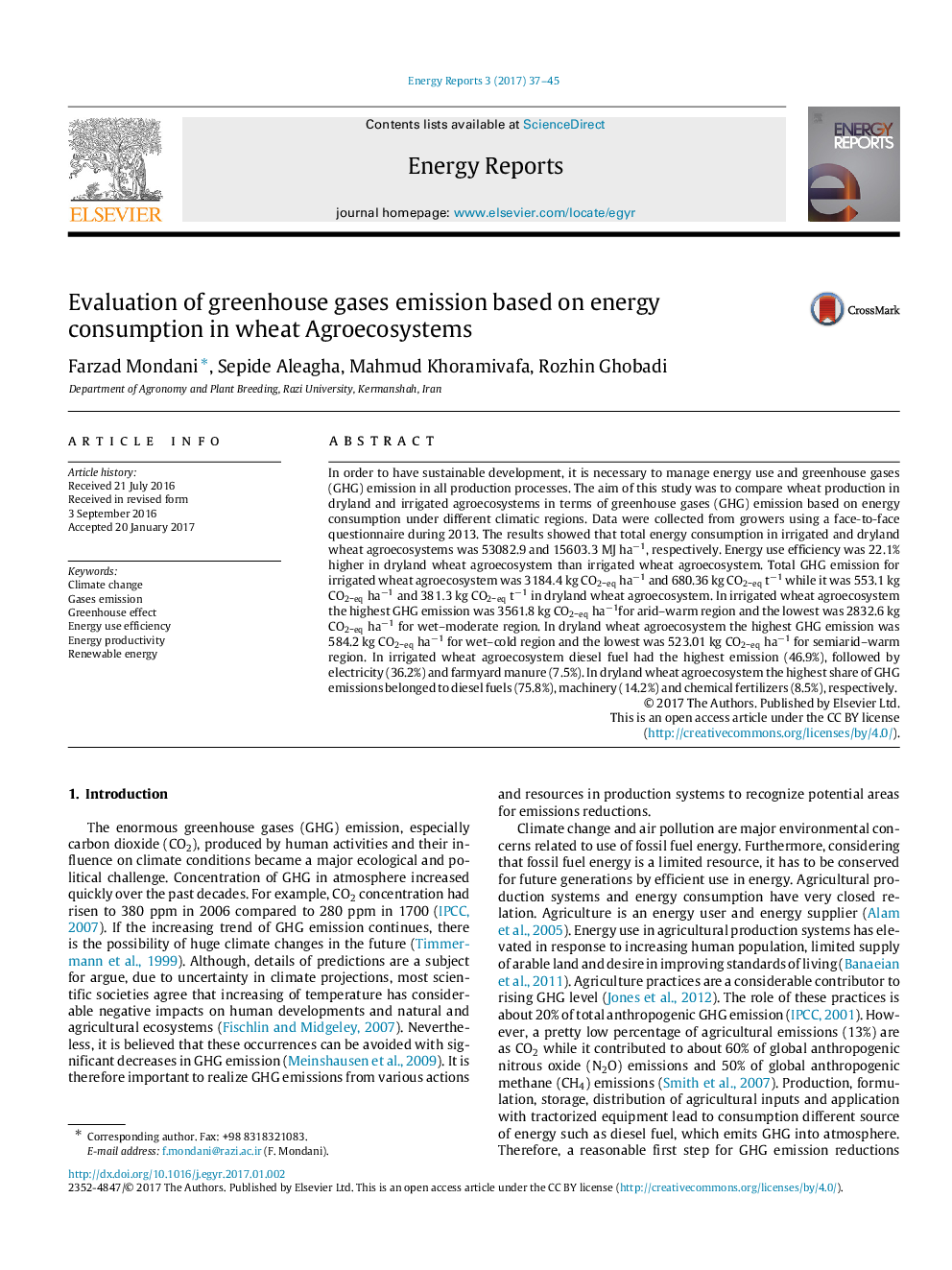| Article ID | Journal | Published Year | Pages | File Type |
|---|---|---|---|---|
| 5477391 | Energy Reports | 2017 | 9 Pages |
Abstract
In order to have sustainable development, it is necessary to manage energy use and greenhouse gases (GHG) emission in all production processes. The aim of this study was to compare wheat production in dryland and irrigated agroecosystems in terms of greenhouse gases (GHG) emission based on energy consumption under different climatic regions. Data were collected from growers using a face-to-face questionnaire during 2013. The results showed that total energy consumption in irrigated and dryland wheat agroecosystems was 53082.9 and 15603.3 MJ haâ1, respectively. Energy use efficiency was 22.1% higher in dryland wheat agroecosystem than irrigated wheat agroecosystem. Total GHG emission for irrigated wheat agroecosystem was 3184.4 kg CO2-eq  haâ1 and 680.36 kg CO2-eq  tâ1 while it was 553.1 kg CO2-eq  haâ1 and 381.3 kg CO2-eq  tâ1 in dryland wheat agroecosystem. In irrigated wheat agroecosystem the highest GHG emission was 3561.8 kg CO2-eq  haâ1for arid-warm region and the lowest was 2832.6 kg CO2-eq  haâ1 for wet-moderate region. In dryland wheat agroecosystem the highest GHG emission was 584.2 kg CO2-eq  haâ1 for wet-cold region and the lowest was 523.01 kg CO2-eq  haâ1 for semiarid-warm region. In irrigated wheat agroecosystem diesel fuel had the highest emission (46.9%), followed by electricity (36.2%) and farmyard manure (7.5%). In dryland wheat agroecosystem the highest share of GHG emissions belonged to diesel fuels (75.8%), machinery (14.2%) and chemical fertilizers (8.5%), respectively.
Related Topics
Physical Sciences and Engineering
Energy
Energy Engineering and Power Technology
Authors
Farzad Mondani, Sepide Aleagha, Mahmud Khoramivafa, Rozhin Ghobadi,
